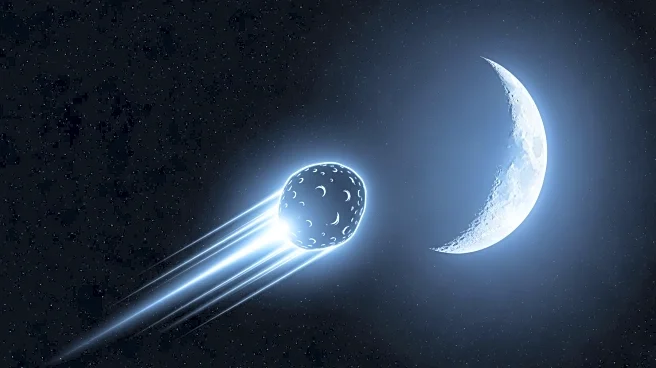What's Happening?
Asteroid 2025 TP5, discovered only two days prior, passed by Earth at a distance closer than the moon. The asteroid, approximately 54 feet in diameter, flew by at a minimum distance of 60,328 miles from
Earth. This event occurred at 4:09 p.m. EDT, with the asteroid later making a close approach to the moon. Despite its proximity, 2025 TP5 posed no threat to Earth. The asteroid was detected by the Asteroid Terrestrial-impact Last Alert System (ATLAS) in Hawaii, which is designed to identify potentially hazardous asteroids. The discovery highlights the capabilities of modern asteroid detection systems.
Why It's Important?
The close flyby of asteroid 2025 TP5 underscores the importance of asteroid detection and monitoring systems like ATLAS. These systems play a crucial role in identifying and tracking near-Earth objects that could pose a threat. The event demonstrates the advancements in technology that allow astronomers to detect and catalog asteroids, ensuring that potential threats are identified early. This contributes to planetary defense efforts and enhances our understanding of the solar system's dynamics.
What's Next?
Astronomers will continue to monitor 2025 TP5 and other near-Earth objects to assess their trajectories and potential risks. The ongoing development of detection systems will improve the accuracy and speed of identifying asteroids, enhancing global preparedness for potential impacts. Collaboration between international space agencies and research institutions will be vital in advancing asteroid tracking technologies and strategies.
Beyond the Headlines
The discovery and tracking of asteroids like 2025 TP5 highlight the need for public awareness and education about space threats. It raises questions about the allocation of resources for planetary defense and the ethical considerations of potential asteroid deflection missions. The event also emphasizes the interconnectedness of global scientific efforts in safeguarding Earth from extraterrestrial hazards.













